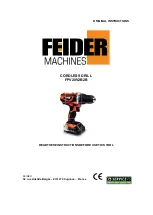
Power Module Electrical Description
3-1
C
HAPTER
3
Power Module Electrical Description
DC input voltage to the Power Module is supplied by a DC bus, normally the SA500
DC Bus Supply. The inverter bridge in the Power Module converts the constant
potential DC voltage from the DC bus to three-phase AC power for the motor. The
inverter bridge consists of six bi-polar transistors. Interlock circuitry ensures that the
upper phase and lower phase U, V, and W transistors are never turned on at the same
time.
The inverter bridge can regenerate energy to the DC bus. During regeneration, the
inverter returns energy from the motor to the DC bus. However, the SA500 DC Bus
Supply cannot pass this regenerative current back to the AC line. Instead, it stores the
excess energy in its capacitors. It can then pass this surplus energy to other Power
Modules on the bus that need motoring current, or it can dissipate the energy through
DC bus braking resistors. See the DC Bus Supply instruction manual (S-3017) for
specifications on the regeneration limits of the DC Bus Supply and for more
information about braking resistors.
The regulator circuitry and UDC communication interface is contained on a single PC
board, the Power Module Interface (PMI) Regulator. This PC board contains control
circuitry for the inverter, resolver and drive I/O circuitry, and fiber-optic transceivers for
communication with the UDC module in the AutoMax rack. The PMI’s main function is
torque regulation for brushless motors and induction motors.
The PMI contains a RISC (reduced instruction set computer) microprocessor
operating at 16 MHz. High speed communication with the UDC module is controlled
by an onboard serial communications controller. Data is transmitted over the
fiber-optic link at 10 Mbit/sec using the High-Level Data Link Control (HDLC) protocol.
Data integrity is checked using a CRC (cyclic redundancy check) error detection
scheme.
The PMI contains an on-board watchdog timer that is enabled when power is applied
to the PMI. Once activated, the on-board CPU must continually reset the watchdog
timer within a specified time or the PMI will shut down. The MCR output, typically used
to control a motor contactor, will be turned off under hardware control within 0.5
seconds if the watchdog times out. (The MCR output is also turned off if the RPI input
turns off.) To reset the watchdog, you must either cycle power or press the RE-BOOT
button on the faceplate.
Any faults in the Power Module will cause the PMI to turn off the control signals to the
power devices (bipolar transistors) that switch the DC bus voltage to the motor.
3.1
Power-Up Routine
When power is applied to the Power Module, the LEDs will blink three times as a test
and the PMI will perform a series of internal diagnostics. The P.M. FLT LED on the
faceplate will flash if the Power Module fails any of these diagnostics. If the diagnostics
are passed, the OK LED on the faceplate will turn on.
Artisan Technology Group - Quality Instrumentation ... Guaranteed | (888) 88-SOURCE | www.artisantg.com
















































